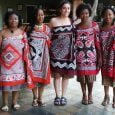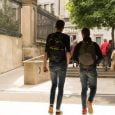In 1998-99, there were just 707 Indian students in American colleges. In the years since — except for one dip between 2010 and 2012 — there has been a steady rise, according to the Institute for International Education’s Open Doors Report, which measures enrolled students in the US from different nationalities. 2015-16 saw a 25% increase, the third successive year of rising numbers. In the current academic year, American Embassy Chargé d’Affaires MaryKay Carlson said in a speech to students, there are 1,66,000 students from India pursuing higher education in the U.S., up from about one lakh two years earlier. “One out of every six international students in the United States is from India,” she said.
Since Donald Trump’s ascension to the American presidency, however, there have been disturbing incidents where discrimination against Indians has escalated to violence; since February, seven Indians have been killed in racially motivated hate crimes.
In an email interview, Michael Kugelman, Asia Program Deputy Director at American policy think-tank Woodrow Wilson Centre and researcher on South Asia, provided some context. “It is only after Donald Trump launched his presidential campaign and injected divisive and exclusionary rhetoric into politics and society that we started to hear about upsurges of attacks on people of colour and religious minorities. […] These hate crimes and hateful sentiment are part of a broader global trend, which has played out across Europe and Asia, including India, that espouses hard-line populist positions and rails against globalisation and the immigration and diversity that comes with that.”
Education consultants say this atmosphere has caused a drop in the number of students planning for a U.S. degree. “Enquiries have declined,” says Narsi Gayam of Promac, a GRE coaching institute in Hyderabad. There has also been a fall in numbers of students signing up for GRE coaching, he says, “apparently due to the fear factor.” Nishidhar Borra of Atlas Consultants, also a Hyderabad firm, says there has been a 30% decline in enquiries over the last few months.
Misgivings dissipate
But if there was uncertainty and some fear, that is changing. Mr. Borra puts it down to prospective students being reassured by friends and relatives already in the U.S. “The situation is improving,” he says.
Prashant Bhonsle, CEO of education loan company InCred and former country head of HDFC Bank’s education loan wing Credila, maintains that overall, demand is unchanged compared to last year. “I would say the aspiration has not gone down; if anything, it is going up.”
Jimeet Sanghavi of Collegepond, a Mumbai-based consulting service for students, agrees. Unwilling to share the exact numbers, as those would help his competitors, he said demand was 49% higher than last year.
“Two or three people said they wanted to change their mind, or go to other countries, [but] numbers are up for graduate applicants because an American education is a good return on investment, and they can start earning. For undergraduates, too, initially it used to be an elite pursuit that involved spending a lot of money. But now it is becoming more common.”
U.S. consulates in India told The Hindu they were unable to provide statistics for the current year, but the overall trend in student visa applications been growing over the last five years. An official from the Consulate in Chennai said, “Over one lakh Indians have applied for student visas thus far.”
Director of International Admissions at Purdue University, Indiana, Danek Torrey, was in Mumbai in March on recruitment visits and told The Hindu that despite instances of violence against Indians in the U.S., the country welcomes Indian students.
“Looking for students from around the world is essential for the diversity of American college campuses and I think I can speak across the board and say American universities need and value diversity,” he said. Mr. Torrey emphasised that American campuses were spaces where student safety is actively promoted.
The Open Doors Report says the rate of growth for India is currently the highest among the top 25 places of origin among international students in the U.S. America would certainly be keen to see that trend continue.
Diverse campuses
Speaking to The Hindu, Heidi Hattenbach, spokesperson of the U.S. Consulate in Mumbai, said, “Students who have been in the U.S. have experienced personally how welcoming America and American universities are to all of our foreign students. As an immigrant nation, we value the contribution of international students to our academic communities throughout the [country].”
“More than one million international students are currently studying in the United States,” says Ariel Pollock, Public Affairs Officer at the Consulate in Chennai. “That’s a testament to the unrivalled quality of American higher education, the robust alumni communities associated with American universities and the attraction of a life-long relationship with the United States.”
The figures for this year will become clearer towards August, when the number of approved student visas for the fall semester (when most courses commence) will be available. Final figures will be available in November, when the Open Doors Report is published.
Meanwhile, other indicators show that whatever the fears students may have had, Ms. Pollock’s confidence is justified.
The number of students registered for the A.P. exams — Class XII exams under the International Baccalaureate which count for college credit in U.S. undergraduate courses — has seen a 7% increase this year. The number of students attending information sessions organised by the United States-India Educational Foundation (USIEF), has gone up by 3%, and enquiries to the USIEF about applications for 2018 have gone up, via both telephone calls (9%) and emails (23%), as well as at education fairs (32%).
Mr. Kugelman summarised the aspiration like this: “My sense is that… the U.S. still appears to be a popular destination — and worth the risks — for Indian students. The desire to study in the U.S. is so strong, and the rationale for a U.S. degree so compelling, that all this
[Source”indianexpress”]




